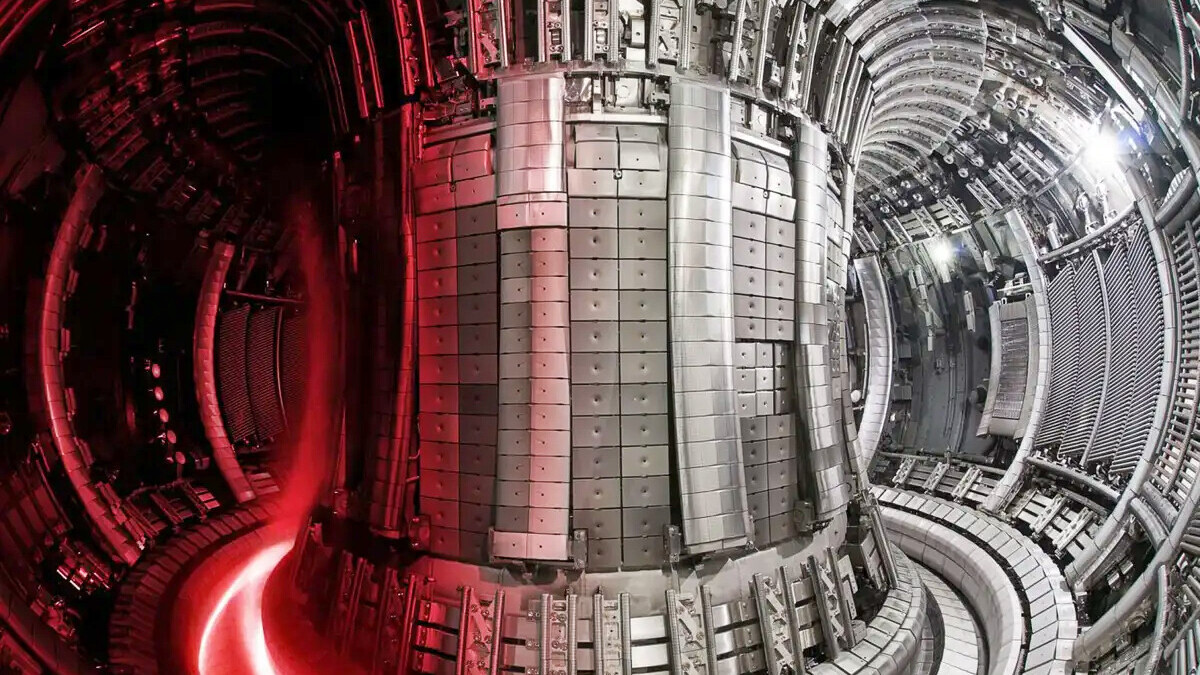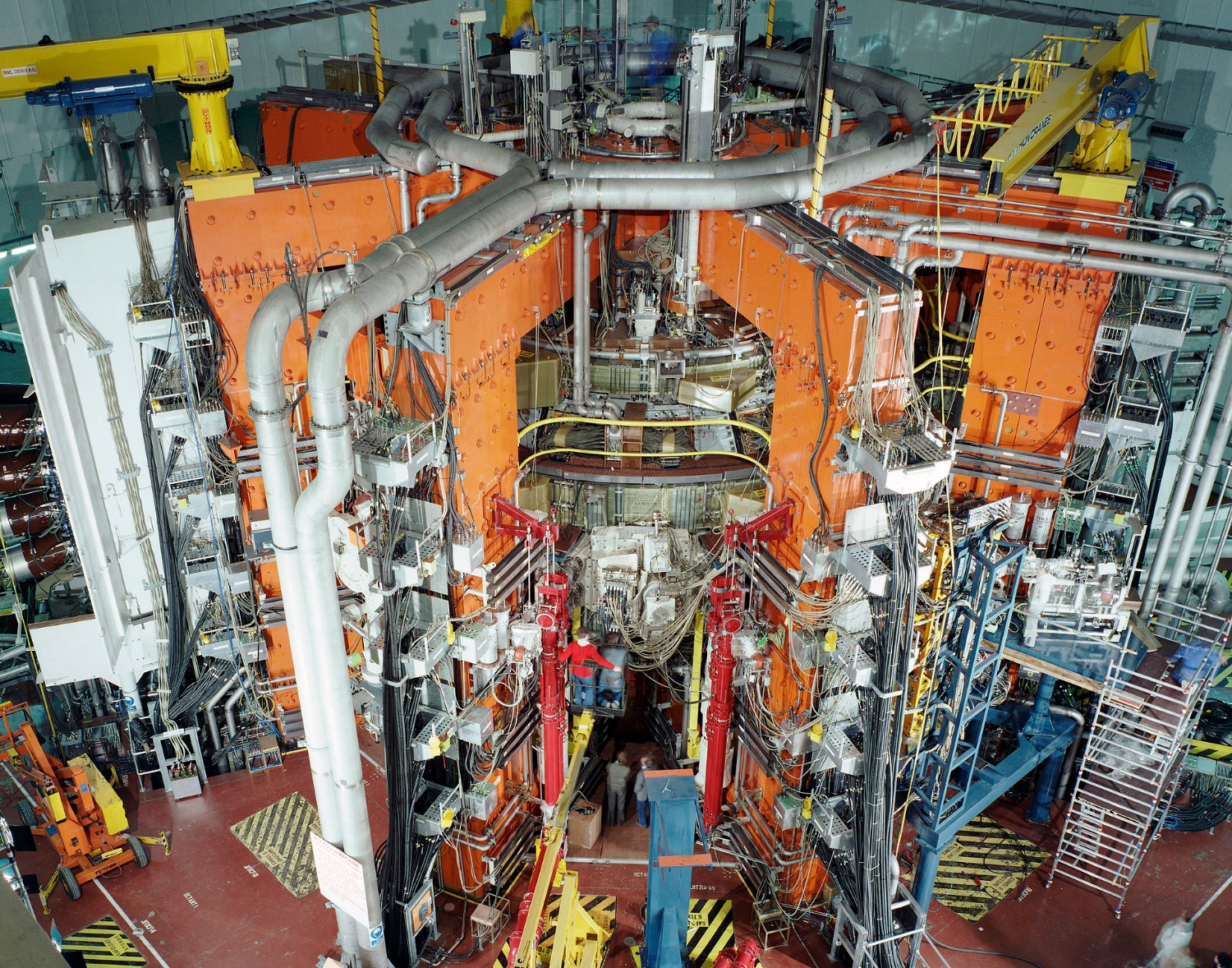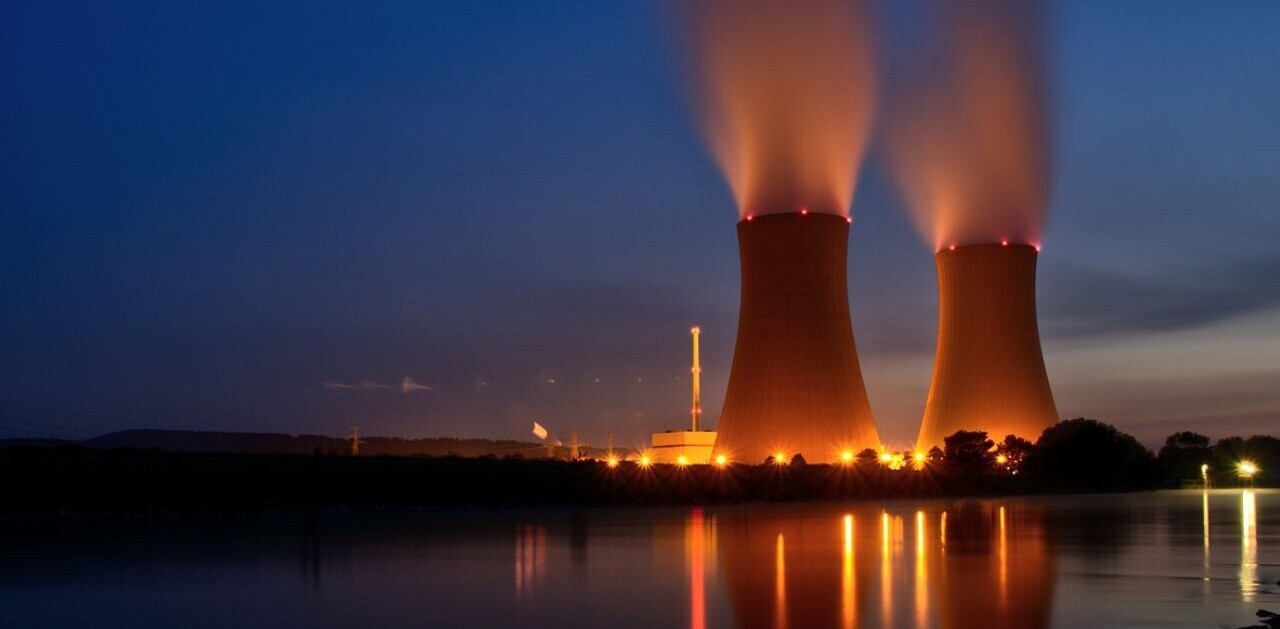
In its last hurrah before being shut down, a 40-year-old fusion reactor in the UK set a new world record for energy output — bringing the decades-old promise of clean, limitless energy one step closer to reality.
Scientists at the Joint European Torus (JET) — a huge, donut-shaped machine known as a tokamak — produced a record 69 megajoules of fusion energy for five seconds, surpassing the previous record of 59 megajoules set in 2021. This equates to a power output of 12.5 megawatts, enough to power around 12,000 households.
The UK’s nuclear minister Andrew Bowie called the latest breakthrough a “fitting swansong” for JET, which concluded its scientific operations at the end of December 2023.
Over 300 scientists and engineers from EUROfusion, a consortium of researchers across Europe, contributed to the landmark experiments at the former nuclear fusion test site in Oxford.
Professor Ambrogio Fasoli, programme manager at EUROfusion, said the new energy record “instills greater confidence” in future fusion machines like ITER, a €22bn fusion reactor currently under construction in France.
“Beyond setting a new record, we achieved things we’ve never done before and deepened our understanding of fusion physics,” said the Italian physicist.
The experiment was attained using just 0.2 milligrams of deuterium-tritium fuel. The tokamak takes these hydrogen isotopes and heats them to temperatures hotter than the Sun so that their nuclei fuse together, releasing huge amounts of energy.
When running, the machine reached temperatures of 150 million°C — temporarily making it the hottest point in our solar system.
Why is JET being shutdown?
In 1958 when US WWII research on fusion was declassified it sent Russia, UK, Europe, Japan, and the US on a race to develop fusion for energy production.
The Brits and the Europeans decided to team up and thus, JET was born. The reactor was first commissioned in 1983 and set its first fusion energy record in 1997.
JET remained the world’s most advanced experimental fusion reactor ever made before it was shut down. Its experiments were critical to the development of ITER and other planned fusion devices.
The UK and EUROfusion announced that they would close JET this year back in 2016, with the hope that ITER would already be up and running.

“ITER has always been seen as the successor of JET,” said Emilia Solano, a fusion researcher at the Madrid-based National Fusion Laboratory of Spain. “But now we are facing a huge gap in time between the two fusion experiments. We need to bridge that gap.”
ITER is only set to start deuterium-tritium reactions in 2035 — although it has already been delayed several times.
Solano is the leader of a petition launched in October 2023 against the closure of JET. The 750 petition signatories believe the decommissioning is “a serious scientific blow” that will have a “negative impact” on the worldwide fusion community.
There are political motivations at play, too. In the wake of Brexit, the UK left the European Atomic Energy Community, which funded JET. While the two regions still worked together until this year, the UK has made it clear it is pursuing its own, separate fusion interests from now.
Late last year, the UK government confirmed it would not play a role in the ITER megaproject, of which many countries including the EU, Russia, the US and China are part.
“In line with the preferences of the UK fusion sector, the UK has decided to pursue a domestic fusion energy strategy instead of associating with the EU’s Euratom programme,” the government said.
The UK is currently developing the Spherical Tokamak for Energy Production (STEP) project, a £2bn grid-connected fusion reactor that aims to produce more electricity than it uses.
The shutdown of JET is in many ways symbolic of the breakdown in relations between the UK and European science and technology communities post-Brexit. And yet, the work that has already been done could prove critical in paving the way to viable fusion energy production going forward.
Can fusion deliver?
The JET milestone is a big one, but scientists are still a long way off from making fusion energy commercially viable. The experiment in December consumed far more energy than it produced, and the reaction was only sustained for five seconds.
While a team at the US National Ignition Facility famously managed to create a fusion reaction that produced more energy than it used — a process known as “ignition” — their machine was largely designed for nuclear warhead experiments, not the kind of fusion energy we would need to power cities and homes.
Many other challenges remain, such as developing the right materials to withstand the superheated conditions found in a reactor, keeping the plasma more stable, and sustaining the reaction for sufficient periods of time to generate reliable power.

The same day as the JET milestone, the EU’s climate service announced that global warming had exceeded 1.5°C above pre-industrial levels across an entire year for the first time. This means we have already failed to meet the Paris Agreement.
While the prospect of abundant, clean, limitless fusion energy sounds like a quickfix to the climate crisis, it may be too little too late. Aneeqa Khan from the University of Manchester warns against interpreting progress in fusion research as a possible solution to the energy transition.
“We are already facing the devastation from climate change on a global scale,” she told New Scientist. “In the short term, we need to use existing low-carbon technologies such as fission and renewables, while investing in fusion for the long term, to be part of a diverse low-carbon energy mix.”
Get the TNW newsletter
Get the most important tech news in your inbox each week.



